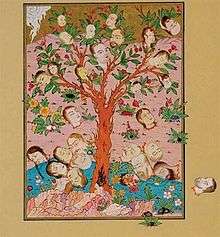Çınar incident
Çınar incident (Platanus Incident) is the name of a 17th-century rebellion in the Ottoman Empire. It is also sometimes known as "The Event of the Vakvak" (Vakʿa-ı Vakvakiye), named after a mythical tree on which human beings grew, as an analogy to the corpses hung from trees in the aftermath of the rebellion.

Background
During the Cretan War (1645–1669), military expenditures of the Ottoman Empire increased, and the empire began experiencing economic difficulties. Sultan Mehmet IV was only a teenager and the regent, Valide Sultan (mother queen) Turhan Hatice and the short term grand viziers, could not find a solution. Especially after the execution of the reformist grand vizier Tarhoncu Ahmet Pasha, who tried to cut back palace expenditures, the only solution proposed was a devaluation.[1] So, the ratio of gold in coins was reduced. The new coins minted were known as "red coin". The salaries were paid in the red coins. But even then, payment to some soldiers was delayed as much as nine months. Besides, the markets in İstanbul refused to accept the red coins.[1]
Incident
A group of soldiers, who had recently returned from Crete in 1656, sent their representatives to the Palace and demanded payment of their salaries. But the representatives were expelled from the palace by Osman Aga, a senior palace guard. This triggered a rebellion on 26 February 1656. The rebels asked to meet with the sultan on 4 March. Such meetings were known as "ayak divanı" (literally: "meeting with folk"). During the meeting, they presented a list of 30 men, whom they thought to be responsible for the economic crisis, and they wanted all to be executed.[2] The young sultan accepted to dismiss some of these, including Osman Aga, but he tried to save their lives, but the angry rebels were not satisfied. They killed most of the names on the list, hanging them on a big platanus tree (Turkish: çınar).[3]
Aftermath
The Çınar Incident showed the regent Valide Sultan Turhan the urgent need of an able administration. Before the Çınar Incident, ten grand viziers had been appointed in a rapid sequence in eight years between 1648–1656, since Mehmet's accession. Short term grand viziers were ineffective in solving the problems of the empire. So, she finally appointed Köprülü Mehmet Pasha as the new grand vizier in the following September. Köprülü Mehmet accepted the post only after Turhan promised not to interfere with his administration. It soon became clear that Köprülü Mehmet was a wise choice. (see Köprülü era)
References
- Prof.Yaşar Yücel-Prof Ali Sevim:Türkiye tarihi III, AKDTYKTTK Yayınları, 1991, pp 111-120
- Gabon Anaston-Bruce Masters:Encyclopaedia of the Ottoman Empire, ISBN 0-8160-6259-5, p.370
- On line history (in Turkish)